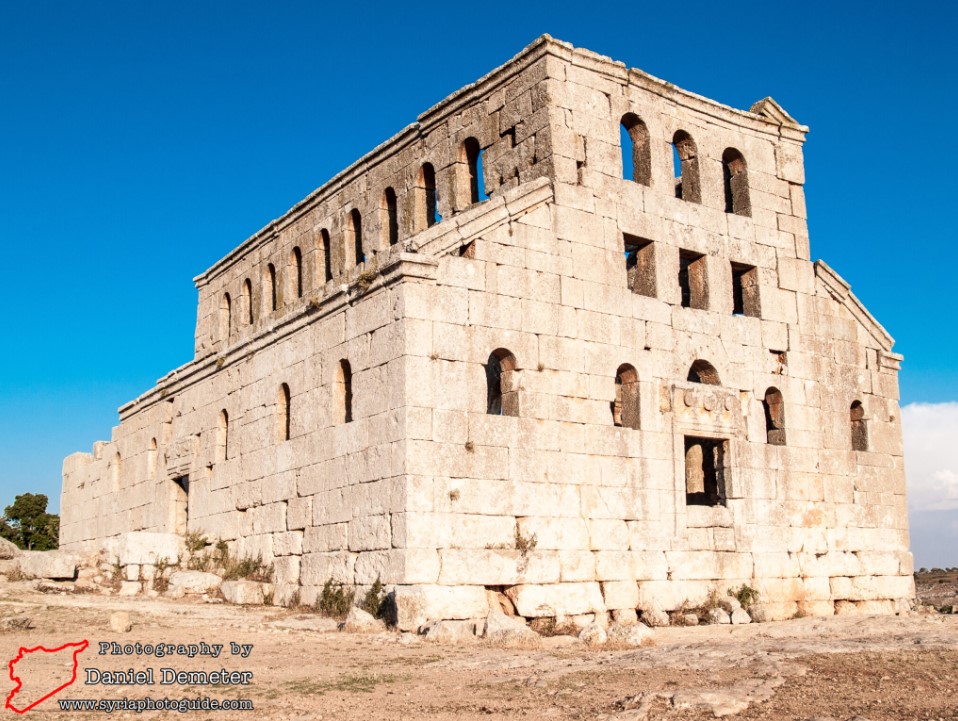Mushabbak Basilica The Mushabbak Basilica is an ancient Byzantine church located near the village of Darat Izza. The church was constructed in the second half of the 5th century CE, around the year 470 CE. Its name, Mushabbak, means trellised or latticed, a fitting description due to its numerous gridded windows and the precise interlocking of its stones in the arches above the columns. The dimensions of the . It consists of a main nave flanked by two side aisles. These aisles are separated from the nave by five columns, each topped with diverse capitals ranging from Corinthian and Ionic to Doric styles. Above these columns stand magnificent arches, with their stones precisely interlocked and varying in dimension. A distinctive feature of the Doric capitals in this church is their elongated neck, designed to match the height of the Corinthian capitals. Furthermore, the Corinthian capitals themselves exhibit variations in the nature of their leaf ornamentation and the presence or absence of an angle. The walls rise above the arches, supporting the windows and the projections that once bore the wooden roof. The main nave’s side walls contain nine windows for illumination, which are independent of the arches below them. The two side aisles were covered by a sloping wooden roof, lower in elevation than the main nave’s roof. Regarding the church’s entrances, there are two doors on the southern facade, each flanked by a window. The northern facade features a door with an ornate lintel and two windows on either side. The main entrance was located on the western facade, distinguished by a lintel adorned with three discs, each enclosing a cross symbol. On the left side of this lintel, a tree is depicted, while the right side bears a symbol representing one of the stylite ascetics. On the western facade, there are two rows of windows, with three in each row, symbolizing the Holy Trinity. The upper row ends in a semicircle, a characteristic feature of churches from the first half of the fifth century AD.
















